Since technology is moving forward, you also have to update yourself with the latest information and modifications. Especially if you are buying a Honda, you must know the difference between a turbo engine and a naturally aspirated engine i.e. Honda turbo engine vs a normal engine.
Honda has inserted the turbo engine in some selected models such as the Honda All New City. However, the number of Honda vehicles with turbo engines is increasing day by day.
Should you be looking for a Honda car with a turbo engine or a regular engine? We are to find it out! Our article will help you explore the difference between the two types of engines – the definition and difference. Let’s cut the words and start our guide.
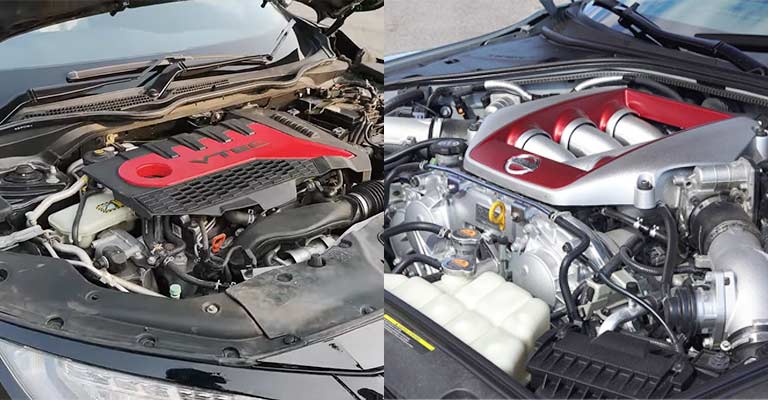
Honda Turbo Engine Vs Normal Engine: A Brief Overview
Turbocharged engines are power boosters for the regular engines. Almost all modern cars are mounted with turbo engines these days. They improve your car’s horsepower, contributing significantly to high-performance sports cars.
On the other hand, the normal engines usually refer to the internal combustion engines. They both are power efficient, however won’t get you the same mileage. Here’s a detailed definition of both,
What Is A Turbo Engine?
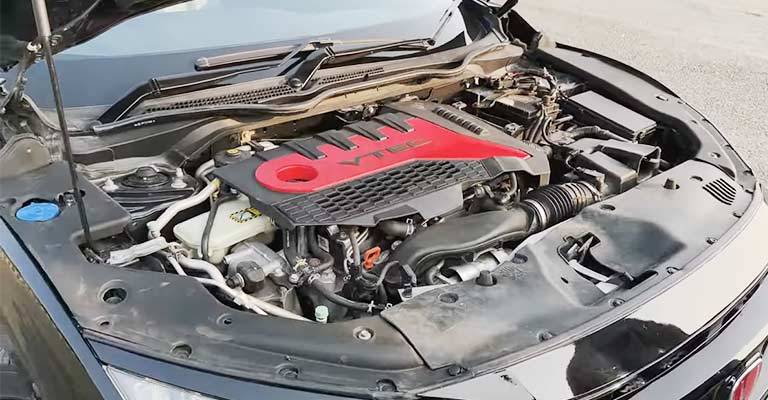
Here’s what Wikipedia says, “ In an internal combustion engine, a turbocharger is a forced induction device that is powered by the flow of exhaust gases. It uses this energy to compress the intake air, forcing more air into the engine in order to produce more power for a given displacement.”
As you see, a turbocharger is an induction device used synchronously with the internal combustion engine. It generates more power than regular engines by developing potential combustion. The results? A surge of power revs up the small engine above its weight class.
What’s the Advantage of a Turbo Engine?
One of the primary reasons you should opt for the turbo engine is performance! Turbocharged engines offer you better performance than normal engines. On city roads, you may often need a boost in power to join the onrushing traffic.
In such cases, the turbo engine will provide you with the extra power. Your Honda engine will have improved performance on any busy road. Another reason why many people opt for the turbo engine is fuel efficiency.
Just think, with a turbo engine onboard, your Honda gets the extra power without even increasing the engine size. Turbo engines are basically more fuel-efficient and performance-centric than large regular engines.
What Is A Regular Engine?
By regular engines, we generally mean the internal combustion-based Continuously Variable Transmission (CVT) engines. They are usually built keeping durability and reliability in mind.
Generally, automakers including Honda use stronger and heavier metals to build regular engines. Also, the engines are designed to deliver low revs per minute. This is done to prolong the lifespan of the engine.
The fuel economy is also efficient but usually not performance-oriented. The most common type of regular engines are the inline or straight engines. Most modern cars use an inline 4-cylinder configuration.
What’s the Advantage of a Regular Engine?
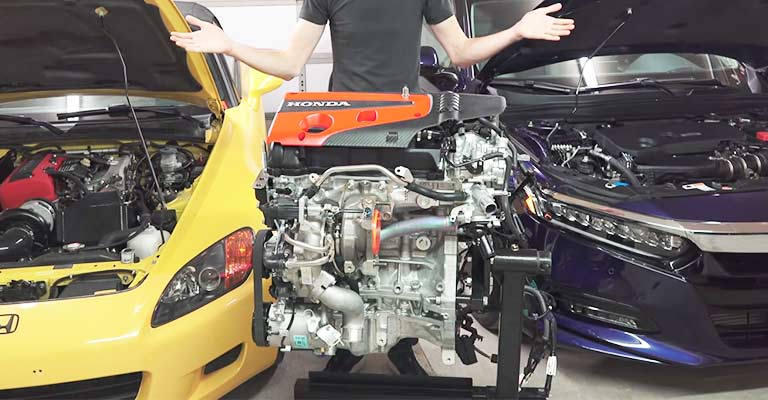
Regular engines will give you everything that turbocharged engines can’t. Although turbo engines stand for more power and torque, a large segment of consumers still prefer the regular Honda engines due to their simplicity.
With regular engines, you have fewer parts to take care of. Additionally, fewer parts contribute to increased reliability and low maintenance. Plus, regular engines deliver linear power across the entire RPM range. Engines of such types are less likely to break down suddenly
Honda Turbo Engine Vs Normal Engine 2024: Difference Guide
Now, you know the basics of Honda turbo engines and regular engines. Here’s a different guide on their performance and usability.
1) The Basics
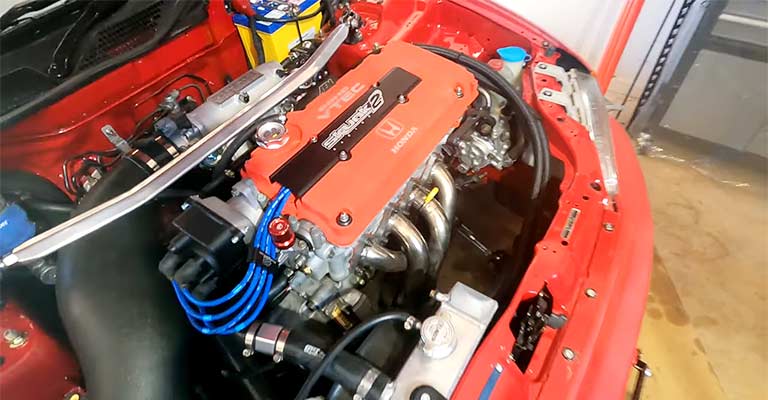
Turbo Engines are meant for big power and torque. However, the decision may come differently for manufacturers as the companies share a unique goal with the forced induction.
Honda Regular Engines
Regular combustion engines rely on standard air intake systems. There is no forced induction with such engines. The engine basically gets what you breathe in.
Regular engines have an impression of steady and predictable power delivery. It often comes with low maintenance as well as low maintenance costs. That’s why, a lot of consumers, who preferably don’t need to rev up the road and feel settled with moderate speed.
Honda uses the 2.0L 4-cylinder engine for the regular engines. It is a standard gas engine, introduced with the entry-level of the Honda 2022 Civic.
That’s a standard non-turbo engine and ideally delivers 158 horsepower and 138 lb-ft of torque. If you look into efficiency, this engine can deliver an EPA of 31 MPG in the city and 40 MPG for the highway roads. Additionally, this Civic LX trim delivers 35 MPG in combination.
Honda regular engines deliver a 10.8:1 compression ratio. Also, it gets multi-point fuel injection. As per our definition of regular engines, this one simply injects fuel into the engine. That’s how the regular Honda engine gets maximum potential.
Honda Turbo Engines
Turbo engines use a small device called the turbocharger. This small device compresses the incoming air, and then the compressed air is mixed with fuel in order to develop combustion.
The 1.5L 4-engine engines come genuinely as turbocharged for Honda. By now, the Japanese automaker has installed the turbo engines on an array of cars. It comes standard for the Civic EX and its Touring trims.
Turbo engines are small but they serve better than naturally aspirated engines on EPA’s clumsy driving schedule. However, there’s no 100% guarantee that the turbo engines will always keep the speed and acceleration on busy highways.
Honda 1.5L turbo engine offers 16.5 PSI in order to boost pressure. In comparison with the naturally aspirated engines, the turbo engines offer a 10.3:1 compression ratio.
One of the key characteristics of turbocharged engines is, that they can reduce inessential waste and improve performance accordingly based on specific fuel requirements. The turbo engines can determine the exact amount of fuel your car needs.
The turbo engine also comes with direct fuel injection, meaning it directly injects the fuel into the combustion chamber of the engine.
2) Performance
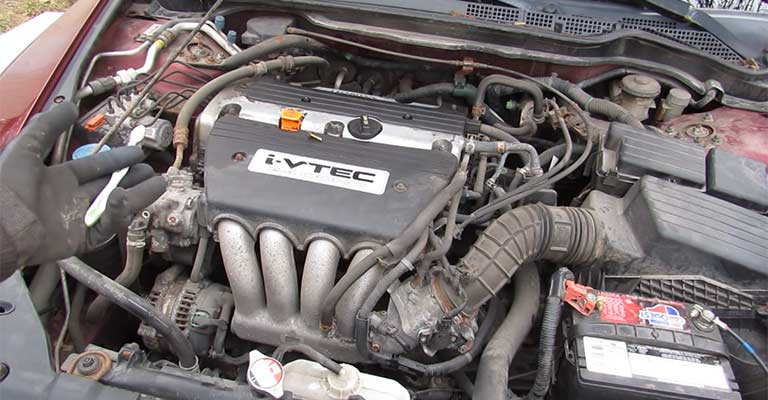
Naturally aspirated engines deliver stable power across their RPM range. While the regular engines can’t deliver the raw power like a turbocharged engine, they have a long history of successful reliability.
On the other hand, the forced induction of turbocharged engines delivers more power per liter of displacement. It develops improved performance and acceleration. Below are the counts from the real-life results of both turbo and normal engines.
The 1.5L 4-cylinder turbo engines take performance one step further. It can develop 180 horsepower and 177 lb-ft of torque. To look at the EPA rating, consider the Honda Civic for a while. The EPA measures for the EX trim are estimated at 33 MPG for the city and 42 MPG for the highway, 36 MPG combinedly.
In serial, the Touring trim delivers an EPA of an estimated 31 MPG for the city and 38 for the highway, 34 MPG combined.
Real Life Scenario
We have also inspected two Honda Civic Sedans, each equipped with the CVT, but only one came with the 174 HP 1.5L 4-cylinder turbo engine. Other sedans had a naturally aspirated 2.0L 158 horsepower engine.
According to EPA calculation, with its 31/42 highway MPG rating, the turbo Civic beats the standard Civic by 1 MPG. However, both Civics are equally economical on a 300-mile circuit of highways, city, and rural driving, all mixed. On average, both cars delivered 40 MPG.
We have also combined the measures on fuel consumption for both Civics. Results may or may not surprise you! Finally, we have to admit that the turbo engine wins the race in terms of speed, in a range between 30 to 90 MPH. It gets 6 MPG more between 40 to 55 MPH.
3) Maintenance
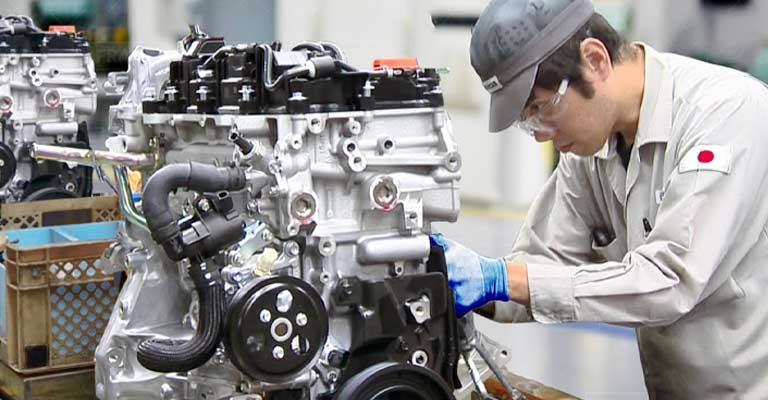
A car requires a lot of maintenance and scheduled check-ups! That’s why before you purchase a car, ask yourself are you ready to properly maintain or service your car? A turbo-engine-based car requires more maintenance than naturally aspirated engines. Here’s why,
Honda Regular Engines
Honda naturally aspirated engines are a popular choice for many due to their simplicity and easy maintenance. The regular engines offer a better structural base in association with modern tech.
In fact, the naturally aspirated engines are also called the breathing engines. The intake air generates power. You can add more fuel into the fuel chamber as more air enters the combustion chamber of the engine. Thus, you have the required explosion for delivering power.
Smaller cars with regular engines also require less fuel than average. In short, the simpler design is the main reason behind you need less frequent trips to Honda mechanics. It saves you not only time but also a significant amount of costs over the lifespan of your car.
Honda Turbo Engines
The turbo engines, on the other hand, follow the parallel configuration. It has two identical turbos. Each of the turbos gets a different group of exhaust streams directly from the engine. This configuration is useful instead of one large turbo to boost delivery performance and reach the optimal RPM.
As you can see, the turbo engines feature a more complex configuration than the regular engines. That’s why they may have slightly higher maintenance costs.
However, it’s not uncommon that owners of turbo cars have experienced challenges to ensure optimal performance of the turbo cars. Turbochargers do require a significant amount of attention.
Yes! The turbochargers are more sensitive than the regular engines. But with proper maintenance and scheduled checkups, these engines will also have a long lifespan and high durability.
Honda Turbo Engines Vs Naturally Aspirated Engines: Overview
Congratulations on finishing our article! Now, you know the difference between the Honda turbo engines and naturally aspirated engines.
If you want an honest review, the selection of a turbo or normal engine starts with you. Do you focus more on the engine’s reliability? You don’t need a speed boost up on highways and are okay with the nominal speed of naturally aspirated engines?
Then, we believe the regular engines would be the ideal choice for your car. However, if you have needs otherwise, such as you demand a speed up on long drives and are okay with frequent maintenance, consider buying turbo engine-based cars like the Civic Touring.
We hope our article was a fair elaboration on the Honda Turbo Engine Vs Normal Engine. Let us know in the comment section what you think, and what type of engine-based car your new Honda is going to be.
We will soon be back with another article on Honda. Regards!

Leave a Reply